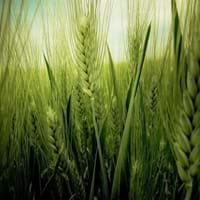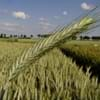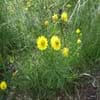Life Span
Annual
Perennial
Origin
Hybrid origin, Western Asia
North America, United States, Northeastern United States, Mid-Atlantic United States, Southeastern United States, North-Central United States, Central United States, South-Central United States, Canada
Types
Durum, Einkorn, Khorasan, Norin 10, Winter Wheat
Autumn Flame, October Brilliance, Tiliford
Number of Varieties
Not Available
Habitat
agricultural areas
Forests, Wide range of ecological site
USDA Hardiness Zone
3-8
3-9
Sunset Zone
2a, 2b, 3a, 3b, 4, 5, 6, 7, 8, 9, 14, 15, 16, 17, 18, 19, 20, 21, 22, 23, 24
A2, A3, 1a, 1b, 2a, 2b, 3a, 3b, 4, 5, 6, 7, 8, 9, 14, 15, 16, 17
Habit
Upright/Erect
Oval or Rounded
Flower Color Modifier
Bicolor
Bicolor
Fruit Color
Light Green, Tan, Sandy Brown
Red, Green, Brown
Leaf Color in Spring
Green, Light Green
Light Green
Leaf Color in Summer
Green, Light Green, Tan
Green, Dark Green
Leaf Color in Fall
Green, Gold, Tan
Yellow, Red, Orange, Yellow green, Gold, Dark Red, Orange Red
Leaf Color in Winter
Light Green
Not Available
Leaf Shape
Long linear and narrow
Maple shaped
Plant Season
Spring, Summer, Fall, Winter
Spring, Summer, Fall
Sunlight
Full Sun
Full Sun, Partial Sun
Growth Rate
Very Fast
Medium
Type of Soil
Loam
Clay, Loam, Sand
The pH of Soil
Neutral
Acidic, Neutral, Alkaline
Soil Drainage
Average
Average
Bloom Time
Early Summer
Early Spring, Spring
Tolerances
Drought
Wet Site, Soil Compaction
Where to Plant?
Ground
Ground
How to Plant?
Seedlings
Seedlings, Vegetative Reproduction
Plant Maintenance
Medium
Medium
Watering Requirements
Water Deeply
Water Deeply, Water when top layer of soil becomes dry
In Summer
Lots of watering
Lots of watering
In Spring
Moderate
Moderate
In Winter
Average Water
Average Water
Soil pH
Slightly Acidic
Acidic, Neutral, Alkaline
Soil Type
Fertile, Well drained, Well-aerated
Clay, Loam, Sand
Soil Drainage Capacity
Well drained
Average
Sun Exposure
Full Sun
Full Sun, Partial Sun
Pruning
Remove damaged leaves, Remove dead branches, Remove dead leaves
Remove dead branches, Remove dead leaves
Fertilizers
All-Purpose Liquid Fertilizer, Nitrogen, Phosphorous, Potassium
General garden fertilizer, No need to fertilize every year
Pests and Diseases
Bacterial leaf streak and black chaff, Powdery mildew, Rust
Anthracnose, Bleeding canker, Decline, Fomes root rot, Ganoderma root rot, Laetiporus root rot, Leaf spot, Powdery mildew, Tar spot, Verticillium Wilt
Plant Tolerance
Drought
Soil Compaction, Wet Site
Flowers
Showy
Insignificant
Flower Petal Number
Single
Single
Fragrant Bark/Stem
Yes
No
Foliage Texture
Coarse
Medium
Foliage Sheen
Matte
Matte
Attracts
Birds
Not Available
Allergy
no allergic reactions
breathing problems, Eczema, flushing of face, Hives, Low blood pressure, Oral cavity, Rapid Heartbeat, Runny nose, Watery eyes
Aesthetic Uses
Not Used For Aesthetic Purpose
Showy Purposes
Beauty Benefits
Good for skin and hair, Protects from sun damage, Weightloss
Not Available
Environmental Uses
Air purification
Air purification, Wildlife
Medicinal Uses
Antibilious, Antihydrotic, Antipruritic, Antipyretic, Antivinous, Sedative, Stomachic
Not Available
Part of Plant Used
Seeds, Stem, Straw
Whole plant
Other Uses
Biomass for fuel, Used for laundering, Used in paper industry
Edible syrup, Used as Ornamental plant
Used As Indoor Plant
Showy
Yes
Used As Outdoor Plant
Yes
Yes
Garden Design
Not Available
Feature Plant, Shade Trees, Street Trees
Botanical Name
TRITICUM aestivum
ACER rubrum
Common Name
Bread Wheat, Common Wheat
Northern Red Maple, Red Maple
In Hindi
गेहूं
लाल मेपल के पेड़
In German
Brotweizen
Red Maple Tree
In French
pain de blé
Red Maple Tree
In Spanish
El pan de trigo
Árbol de arce rojo
In Greek
ψωμί ολικής αλέσεως
Red Maple Tree
In Portuguese
pão de trigo
Árvore de bordo vermelho
In Polish
chleb pszenny
Red Maple Tree
In Latin
Triticum
Rubrum Maple ligno
Phylum
Magnoliophyta
Magnoliophyta
Class
Liliopsida
Magnoliopsida
Clade
Angiosperms, Commelinids, Monocots
Angiosperms, Eudicots, Rosids
Tribe
Triticeae
Not Available
Subfamily
Pooideae
Not Available
Number of Species
Not Available
Season and Care of Bread Wheat and Red Maple Tree
Season and care of Bread Wheat and Red Maple Tree is important to know. While considering everything about Bread Wheat and Red Maple Tree Care, growing season is an essential factor. Bread Wheat season is Spring, Summer, Fall and Winter and Red Maple Tree season is Spring, Summer, Fall and Winter. The type of soil for Bread Wheat is Loam and for Red Maple Tree is Clay, Loam, Sand while the PH of soil for Bread Wheat is Neutral and for Red Maple Tree is Acidic, Neutral, Alkaline.
Bread Wheat and Red Maple Tree Physical Information
Bread Wheat and Red Maple Tree physical information is very important for comparison. Bread Wheat height is 60.00 cm and width 15.20 cm whereas Red Maple Tree height is 1,220.00 cm and width 1,220.00 cm. The color specification of Bread Wheat and Red Maple Tree are as follows:
Bread Wheat flower color: Yellow
Bread Wheat leaf color: Green and Light Green
Red Maple Tree flower color: Red
- Red Maple Tree leaf color: Light Green
Care of Bread Wheat and Red Maple Tree
Care of Bread Wheat and Red Maple Tree include pruning, fertilizers, watering etc. Bread Wheat pruning is done Remove damaged leaves, Remove dead branches and Remove dead leaves and Red Maple Tree pruning is done Remove dead branches and Remove dead leaves. In summer Bread Wheat needs Lots of watering and in winter, it needs Average Water. Whereas, in summer Red Maple Tree needs Lots of watering and in winter, it needs Average Water.





